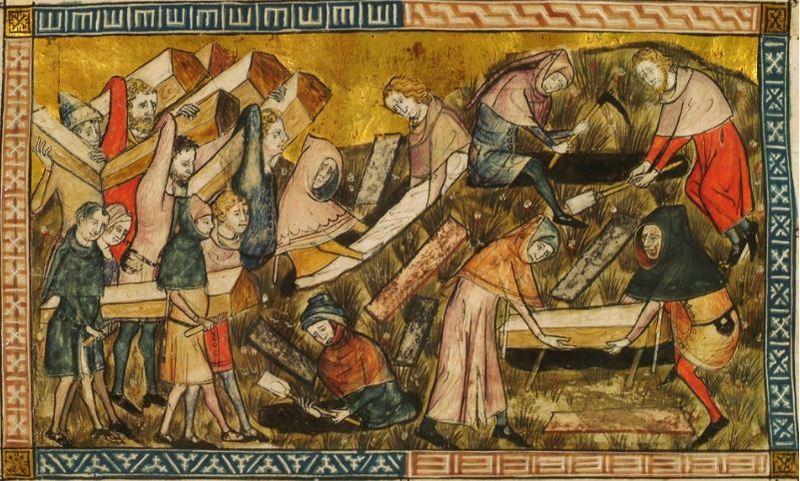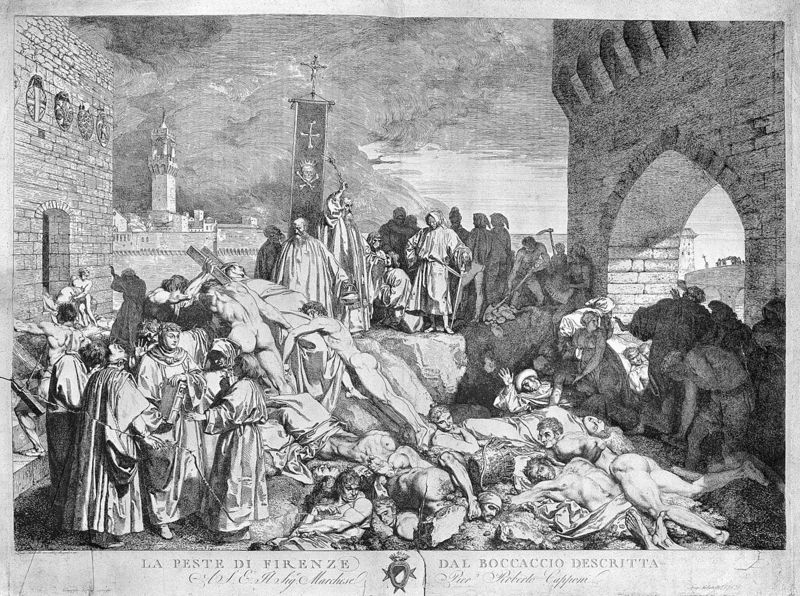The Black Death, 1334-1353.
The Black Death is considered the first documented highly destructive event in human history. The plague seemingly appeared out of nowhere, killing 1/4th of the population of Europe, and then mysteriously disappeared. The Black Death spread quickly through infected fleas on rodents, causing devastating symptoms such as high fever, protrusions, and intense pain. Around 80 percent of victims of the plague died within two or three days of infection. The infected would also experience black spots as a result of hemorrhages, giving the Black Death its infamous name (Langer 1964, 114).

